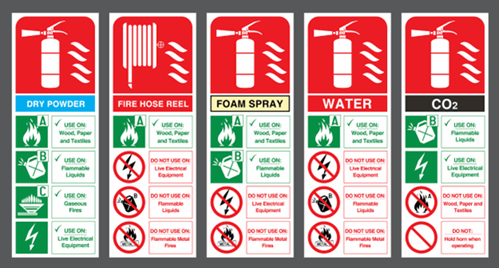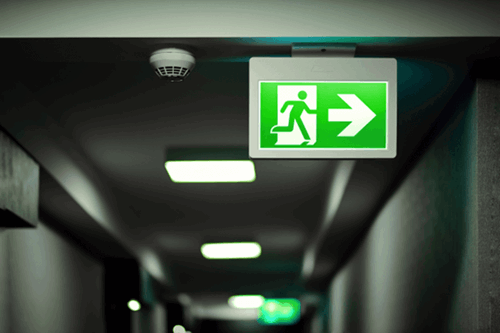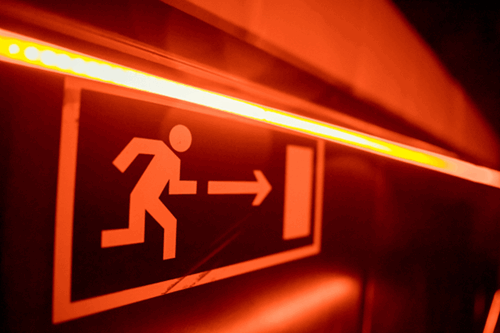We've all been to a workplace or premises and spotted at least one of the essential health and safety signs dotted around, but what do they mean?
Our Croner experts have put together a few of the essential health and safety signs that any business could need and put together some informative posters that are free to download and use.
If you want immediate advice, get in contact with one of Croner's advisors here 0800 124 4971

What are health and safety signs?
Health and safety signs are used to display information about particular hazards or risks that are present. They can often be found in particular areas or accompanying equipment that can be hazardous to health.
Health and safety signs aren't limited to only this, they can often guide individuals in what to do to prevent hazards or have the proper process to report a hazard should one happen.
With that said, some health and safety signs aren't limited to just hazardous substances. They can cover proper hand hygiene, what to do in high temperatures, and how to properly use a piece of equipment. (This isn't an exhaustive list)
Are health and safety signs important?
Health and safety signs are important as they ensure that your workforce remains safe while at work. Ultimately they are there to remind your employees of the dangers that are around them while they are working.
Not only this but some health and safety signs are a legal requirement - depending on what industry or work your business carries out.
Such as construction or businesses using substances that are hazardous to health.

How to identify health and safety signs?
There are health and safety signs for most environments your employees will find themselves in. Each one will have its own identifiable feature.
There is a colour code for each type of sign that tells your employees what the sign means and gives instructions or information. The colour codes are as follows.
Red
If there is a sign that is red (or has a red diagonal line through it) it means that it is either a prohibition sign or is a danger sign. the information commonly accompanying these is either dangerous behaviour, to stop such as ‘no admittance’ or ‘no entry’
Yellow Amber
Typically, yellow or amber and black signs are warning signs. These tell your workforce that they need to take care or take more precautions.

Blue
Blue signs are mandatory signs that show your employees what mandatory behaviour or actions that should be followed by everyone. For example, wearing the correct personal protective equipment (PPE)
Green
Green signs indicate where safe conditions are, such as where emergency exits or first aid signs (and first aid kits) are. These ones don't indicate any danger.
These are the colours of the general health and safety sign, the colours and meanings change slightly when we are talking about fire safety signs. They are as follows:
Fire safety signs - Red
Red fire safety signs refer to firefighting equipment and will identify the equipment and show the location for individuals to find.

Green
These signs indicate where the emergency exits are, such as doors and exits. These should map out the escape route from the building.

When should I use a fire safety sign?
Fire safety signs are used to provide employees and the general public with information, they identify escape routes and firefighting equipment. This type of sign needs to be visible.
Fire exit signage should be placed directly above the fire exit, where the exit may be difficult to identify or to indicate a change in direction. If that isn't possible it should be places where it can be easily seen and where it is unlikely to be obstructed.
If the exit can't be seen, such as in a busy warehouse, the sign should include a directional arrow pointing individuals in the right direction.
There should be a map of all fire exits in common areas in the building such as common rooms and stairwells.

Downloadable posters for your workplace
Croner's experts have put together some posts that you can place around your workplace along with your health and safety signs.
Forklift Trucks
Forklift trucks are used in a variety of different industries, and each year have caused countless accidents. These have included:
- Members of the public are stuck or crushed by the vehicle.
- Overturning because of speed, road conditions or striking objects.
- Loads that are too heavy.
- Unauthorised or improper use.
This poster covers four types of forklifts, reach, counterbalance (including rough terrain), side loader, and telescopic.
It's important to remember that any forklift driver needs to be qualified to operate the vehicle and is required to have refresher training every three to five years.
Each forklift truck your business owns and uses must be examined regularly under the Lifting Operations and Lifting Equipment Regulations 1998 (LOLER) and Provision and Use of Work Equipment Regulations 1998 (PUWER) by a competent person.
Learn more about Forklift trucks in our free download here.
Accident reporting
This poster gives you and your employees an overview of Personal Protective Equipment (PPE), RIDDOR, and who it is they should be reporting accidents to if they happen.
As an employer, you need to ensure you have clear instructions for employees to follow, should the worst happen. Whether that is reporting accidents to their line manager, or filling out the accident report forms/ book.
Sometimes it can be difficult to know what needs to be reported, we've made a simple list for you to follow here, and it's been included in the free downloadable poster.
- All deaths of workers and non-workers as a result of work activities.
- Specified injuries (as listed in regulation 4 of RIDDOR).
- Over seven-day incapacitation of a worker.
- Non-fatal accidents to non-workers (members of the public).
- Diagnosed occupational diseases, which are likely to have been caused by work or made worse.
- Dangerous occurrences, if listed as one of the 27 categories.

High temperatures at work
As we pass through cold and warm months, it's important to remember your employee's welfare, and how they are coping with the heat. We've put together a poster covering the tips and risks of high temperatures at work. Some of the risks include:
- Those who are exposed to direct sunlight for long hours.
- Manual workers.
- People with existing medical conditions.
- Those on certain medications.
- Those with high blood pressure.
- Children, the elderly and expectant mothers.
Remember that during working hours, the temperature in all indoor workplaces should be reasonable. There's currently no law for the minimum or maximum working temperatures. However, the guidance suggests a minimum of 16C or 13C if employees are doing physical work. There isn't any guidance for a maximum temperature figure.
Hand hygiene
It's important to have good hand hygiene as it can help prevent the spread of germs and diseases.
We've put together a poster displaying how to effectively wash hands, and outlined when hands should be washed, for example,
- After handling raw meat.
- Touching hair or face.
- Any type of cleaning (including housework).

Speak to an expert
Croner has a team of award-winning Health & Safety consultants who are specialists in their field. We've been helping businesses for over 80 years and our advice line is open 365 days a year, 24 hours a day. Why not speak to a Croner expert on 0800 124 4971.
Related resources
Categories
- Business Advice
- Contracts & Documentation
- Culture & Performance
- Disciplinary & Grievances
- Dismissals & Conduct
- Employee Conduct
- Employment Law
- End of Contract
- Equality & Discrimination
- Health & Safety
- Hiring & Managing
- Leave & Absence
- Managing Health & Safety
- Moving
- Occupational Health
- Pay & Benefits
- Recruitment
- Risk & Welfare

